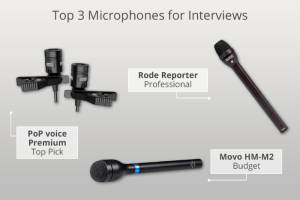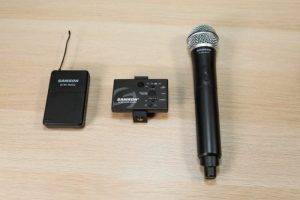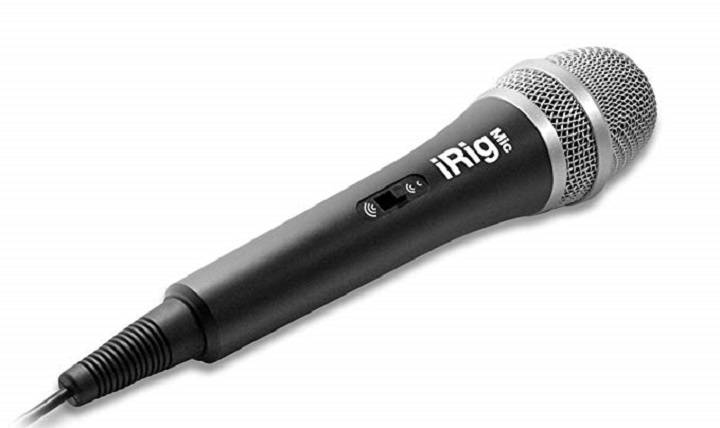Table of Contents
Interviews are a fundamental tool in journalism, research, podcasting, and many other fields. The quality of audio in an interview is essential to capture and convey the essence of the conversation. In this comprehensive guide, we will explore the world of interview microphones, understanding their capabilities, troubleshooting common issues, and revealing tips to maximize their potential.
Introduction to Interview Microphones

Let’s begin our exploration by understanding what interview microphones are and why they are crucial in this field:
Specialized Microphones:
Interview microphones are devices specifically designed to capture audio during interviews. They are designed to be portable, easy to use, and provide high-quality sound.
The Importance of Audio in Interviews:
High-quality audio is essential for an interview to be effective. A good microphone ensures that voices are heard clearly, and the nuances of the conversation are not lost.
Versatility in Interviews:
Interview microphones are versatile tools that can be used in various settings, from in-person interviews to remote interviews and live broadcasts.
Types of Interview Microphones
Interview microphones come in various shapes and sizes. Below, we will explore the most common types:
Handheld Microphones:
Handheld microphones are portable and easy to use. They are ideal for in-person interviews or situations where the interviewer and interviewee can share the microphone.
Lavalier or Lapel Microphones:
Lavalier microphones are small and discreet. They attach to the clothing of the interviewee or interviewer and are ideal for interviews on the move or in noisy environments.
Shotgun or Boom Microphones:
Shotgun microphones are elongated and directional. They are used to capture the sound of a specific subject in noisy environments or when precise control of audio is needed.
Headset Microphones:
Headset microphones attach to the head of the interviewer or interviewee. They are ideal for interviews where hands need to remain free.
Benefits of Interview Microphones
Now that we understand the types of microphones available, let’s explore the benefits they bring to interviews:
Professional Sound Quality:
Interview microphones provide professional sound quality that enhances recording clarity and the understanding of the conversation.
Noise Reduction:
These microphones are designed to reduce unwanted ambient noise, ensuring that the voices of the interviewees stand out.
Portability:
Most interview microphones are portable and easy to carry to any location where an interview takes place.
Versatility:
Different types of microphones allow adaptation to various interview situations and needs.
Troubleshooting Common Issues with Interview Microphones
Interview microphones, like any device, can face problems. Here are some solutions to common issues:
Background Noise:
If unwanted background noise is detected, try recording in a quieter environment or use directional microphones to reduce noise capture.
Electromagnetic Interference:
Electromagnetic interference can cause buzzing or interference in the recording. Keep cables away from sources of interference and use high-quality cables.
Connection Problems:
Verify that all cables are properly connected and that batteries are charged or functioning correctly.
Undetected Microphone:
If your microphone is not recognized by your recording device, check the audio input settings on your device and ensure the microphone is properly connected.
Tips for Maximizing Interview Microphone Performance

To get the most out of interview microphones, consider these additional tips:
Microphone Placement:
Position the microphone close to the interviewee’s mouth to capture clear audio.
Test Before the Interview:
Always test your microphone and recording equipment before conducting an interview to identify and address any issues in advance.
Use Windshields:
For outdoor interviews, consider using foam or furry windshields to minimize wind noise.
Backup Recording:
Always have a backup recording system or microphone available in case of technical issues during the interview.
Microphones for Remote Interviews
In today’s digital age, remote interviews have become increasingly common. Whether you’re conducting interviews over video conferencing platforms or through phone calls, the choice of microphone plays a crucial role in ensuring clear and professional audio quality.
USB Microphones:
USB microphones are a popular choice for remote interviews. They are easy to set up and connect directly to your computer via USB. These microphones offer good sound quality and are suitable for one-on-one or small group interviews conducted online.
Wireless Microphones:
Wireless microphones provide flexibility and freedom of movement during remote interviews. They are often used by broadcasters and professionals conducting remote interviews in various locations.
Smartphone Microphones:
If you’re conducting interviews using your smartphone, investing in an external smartphone microphone can significantly improve audio quality. These microphones are designed to plug into your smartphone’s headphone jack or connect wirelessly via Bluetooth.
Microphone Maintenance and Care
To ensure the longevity and consistent performance of your interview microphone, proper maintenance and care are essential:
Keep It Clean:
Regularly clean your microphone’s exterior and windscreen to remove dirt, dust, and grime. A clean microphone not only looks better but also functions optimally.
Store Properly:
When not in use, store your microphone in a protective case or cover to protect it from environmental factors like dust and moisture.
Avoid Physical Damage:
Handle your microphone with care, and avoid dropping it or subjecting it to physical stress. Even a small dent or crack can affect its performance.
Check Cables and Connectors:
Inspect the microphone’s cables and connectors for any signs of wear or damage. Replace them if necessary to prevent signal loss or interference.
Choosing the Right Interview Microphone
The choice of the right interview microphone depends on various factors, including your specific needs, budget, and intended use. Here are some key considerations:
Purpose of Interviews:
Consider the type of interviews you conduct. Are they in-person or remote? Do you need a single microphone or multiple microphones for group interviews?
Environment:
Think about the environment where you conduct interviews. Is it a controlled, quiet space, or do you often work in noisy or outdoor settings?
Budget:
Set a budget for your microphone purchase. There are options available at various price points, so it’s essential to find a microphone that meets your needs without breaking the bank.
Compatibility:
Ensure that the microphone you choose is compatible with your recording or communication devices, whether it’s a computer, smartphone, camera, or audio interface.
Related Post:
Empowering Education with Teaching Microphones: A Comprehensive Guide
Unveiling the Synco G2/A2: A Comprehensive Guide to Audio Excellence
Unlocking the Potential of Digital Microphones: A Comprehensive Guide
Interview microphones are invaluable tools for capturing clear and professional audio during interviews. By understanding their capabilities, troubleshooting common issues, and implementing the tips mentioned in this comprehensive guide, you can ensure that your interviews are of the highest quality. Whether you’re conducting interviews for journalism, research, podcasts, or any other purpose, the right microphone can make a significant difference in the clarity and impact of your recordings.

